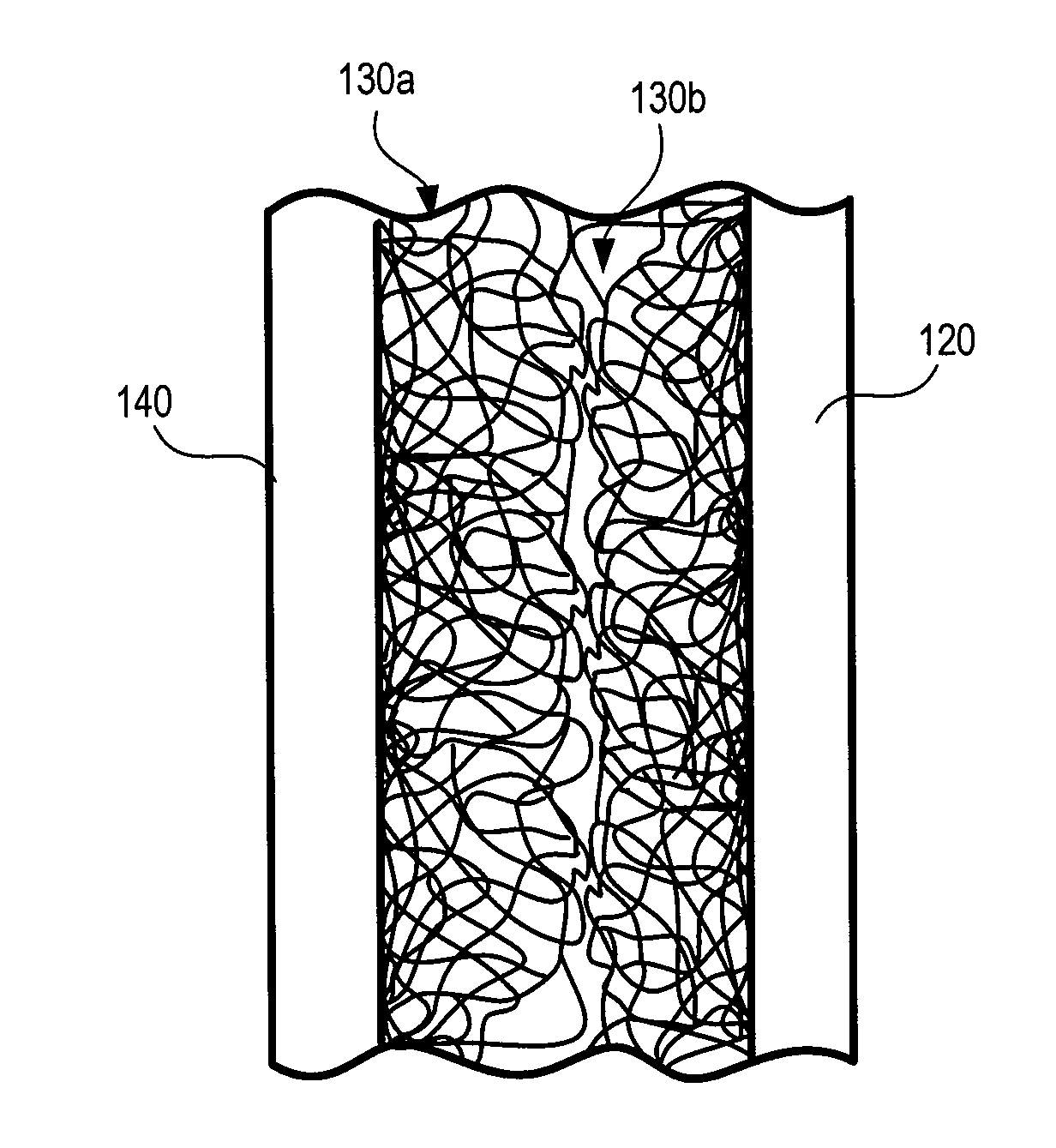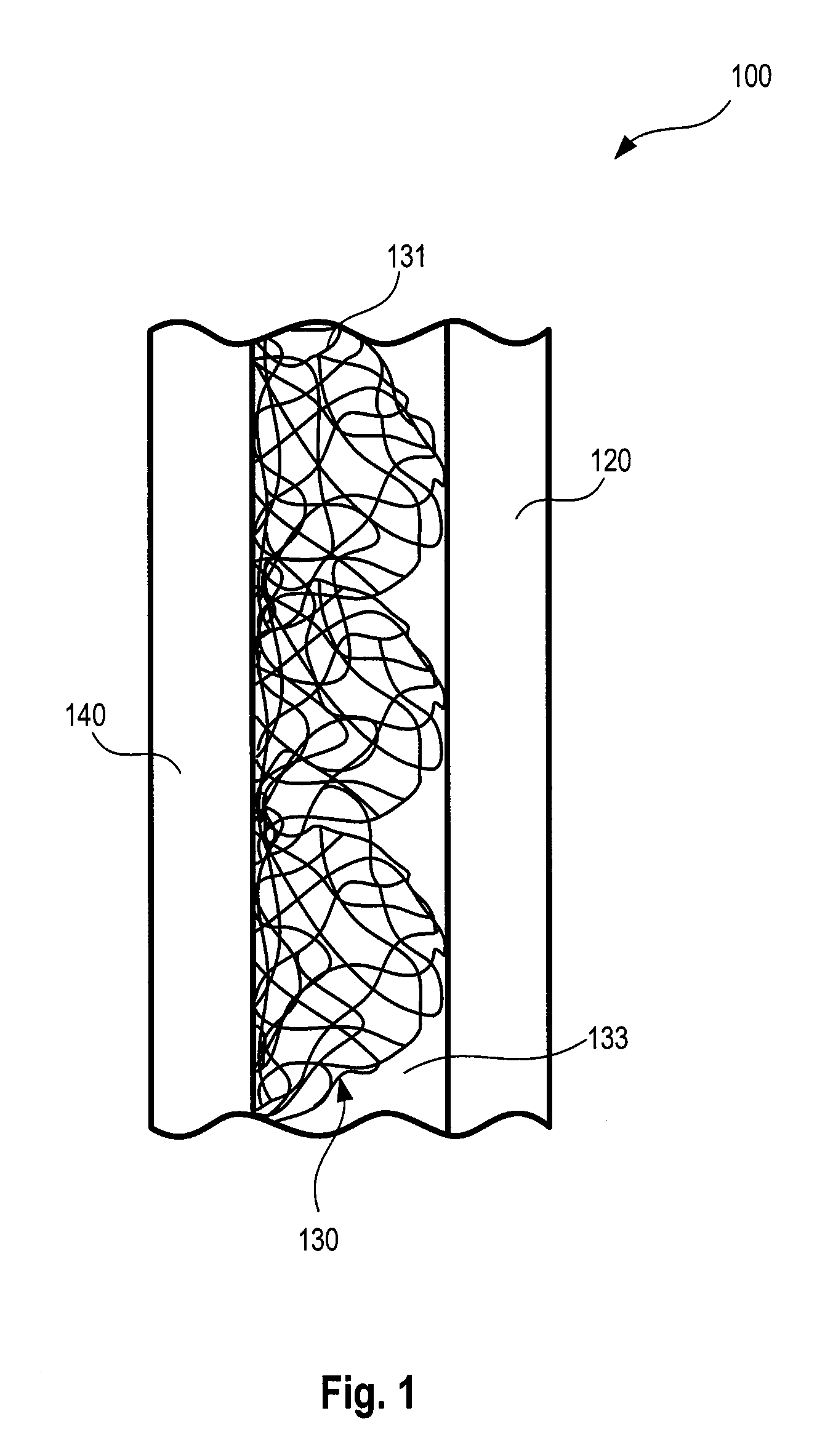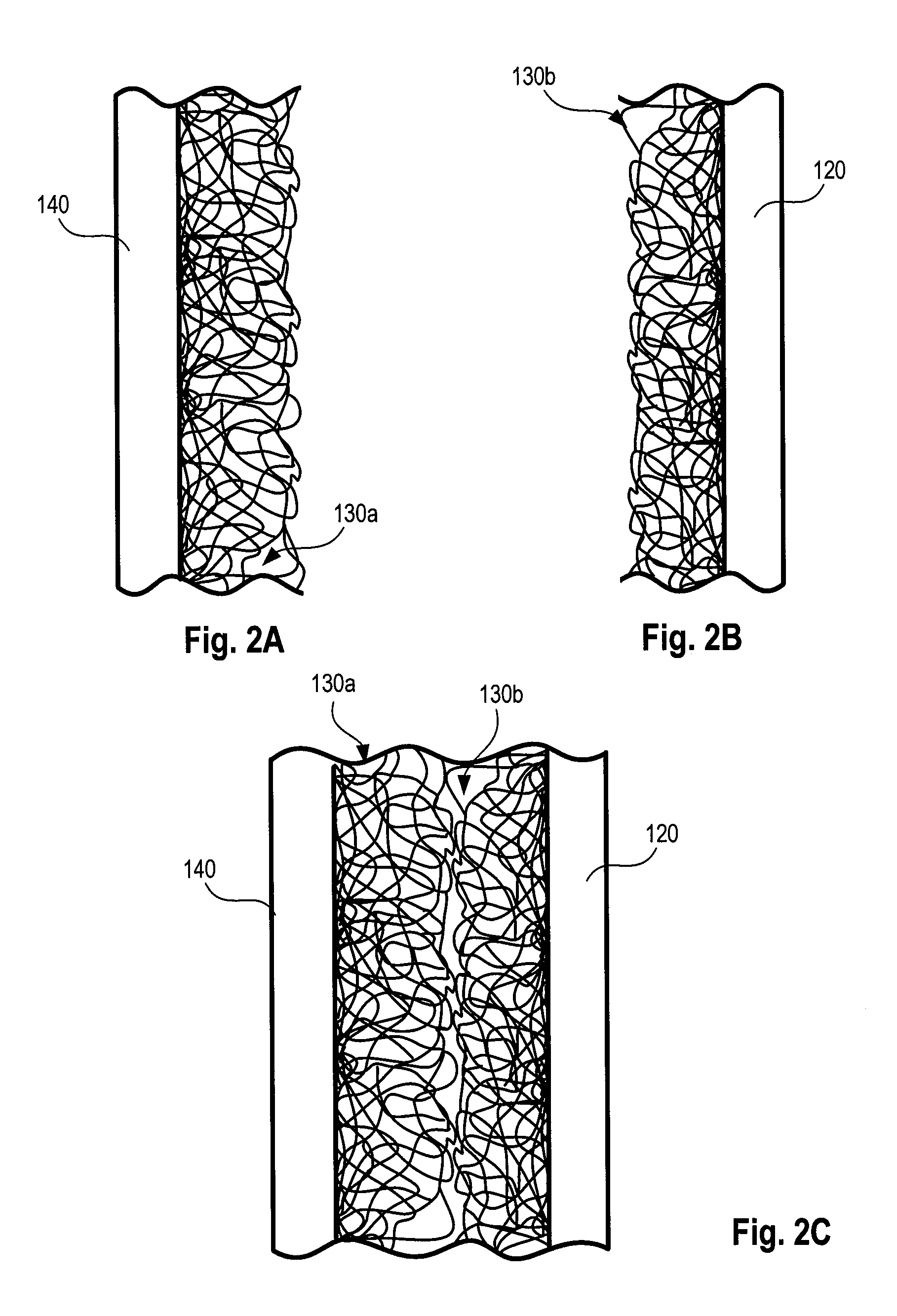Multilayer laminate system and method used within building structures
a multi-layer laminate and building structure technology, applied in the field of multi-layer laminate systems, can solve the problems of building materials to, for example, mold, mildew or rot, premature deterioration of building structures, and the particular vulnerability of walls of building structures to water invasion, so as to prevent moisture damage
- Summary
- Abstract
- Description
- Claims
- Application Information
AI Technical Summary
Benefits of technology
Problems solved by technology
Method used
Image
Examples
Embodiment Construction
[0017]Embodiments of the present invention are directed toward providing a multilayer laminate drainage system and method of making and installing for use in building structures. Certain details are set forth below to provide a sufficient understanding of the invention. However, it will be clear to one skilled in the art that the invention may be practiced without these particular details.
[0018]A multilayer laminate drainage system 100 according to one embodiment of the invention is shown in FIG. 1. The system 100 includes a facer material 140, a rainscreen drainage mat 130, and an all weather resistive barrier 120, where the facer material 140 is laminated to the drainage mat 130, and the drainage mat 130 is laminated to the all weather resistive barrier 120. The facer material 140 provides a surface for applying the outer building cladding, such as stucco, stone, wood siding, masonry, etc. The lamination process typically involves heat and / or pressure and may include an adhesive. ...
PUM
| Property | Measurement | Unit |
|---|---|---|
| lengths | aaaaa | aaaaa |
| surface tension | aaaaa | aaaaa |
| gravity | aaaaa | aaaaa |
Abstract
Description
Claims
Application Information
 Login to View More
Login to View More - R&D
- Intellectual Property
- Life Sciences
- Materials
- Tech Scout
- Unparalleled Data Quality
- Higher Quality Content
- 60% Fewer Hallucinations
Browse by: Latest US Patents, China's latest patents, Technical Efficacy Thesaurus, Application Domain, Technology Topic, Popular Technical Reports.
© 2025 PatSnap. All rights reserved.Legal|Privacy policy|Modern Slavery Act Transparency Statement|Sitemap|About US| Contact US: help@patsnap.com



